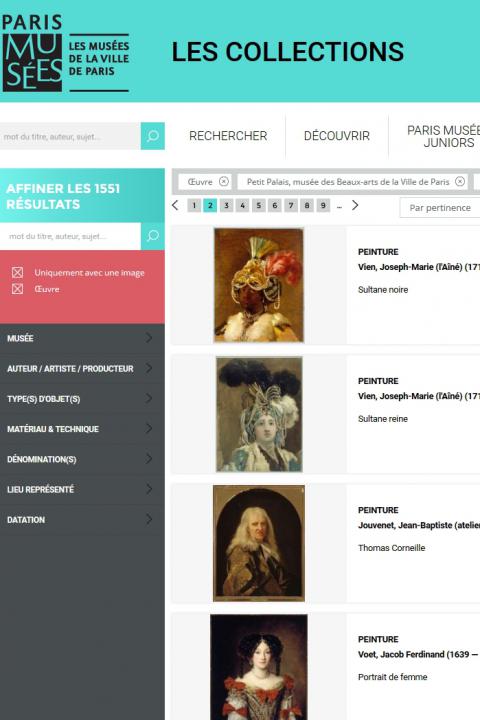This monumental platter is one of the most famous majolica items preserved in the Petit Palais.
A form of ceramic specific to the Italian Renaissance, majolica is a type of earthenware, a pottery covered with opaque white tin glaze which acts as a base for painted decoration using metallic oxides.
In addition to its wonderful painted decoration, the Judgement of Paris platter has a decorative lustre. Lustre, which brought fame to the town of Gubbio, is obtained during the final firing in a reducing atmosphere (from which oxygen is removed) by applying a paste containing metallic salts of silver or copper to the earthenware.
This episode from Greek history, which was very popular during the Renaissance, depicts Paris, chosen by the gods as the judge in the dispute between Hera, Athena and Aphrodite. He chooses Aphrodite as the most beautiful and awards her the golden apple.
The iconography of the goddesses is inspired by an engraving by Marcantonio Raimondi (circa 1480 – between 1527 and 1534) after a work by the painter Raphaël, demonstrating the frequent and fruitful exchange of ideas between painting, engraving and objets d’art during the Renaissance.

City of Paris municipal collection's website
The collections portal can be used to search the collections of Paris’s 14 municipal museums (approximately 336,000 works, including 43,000 belonging to the Petit Palais).
It is also possible to download around 12,000 images of the museum’s works free of charge.
Access the Museums of the City of Paris collections portal
Extern databases
Discover a selection of databases online presenting works from the Petit Palais or documents concerning the history of the museum.
